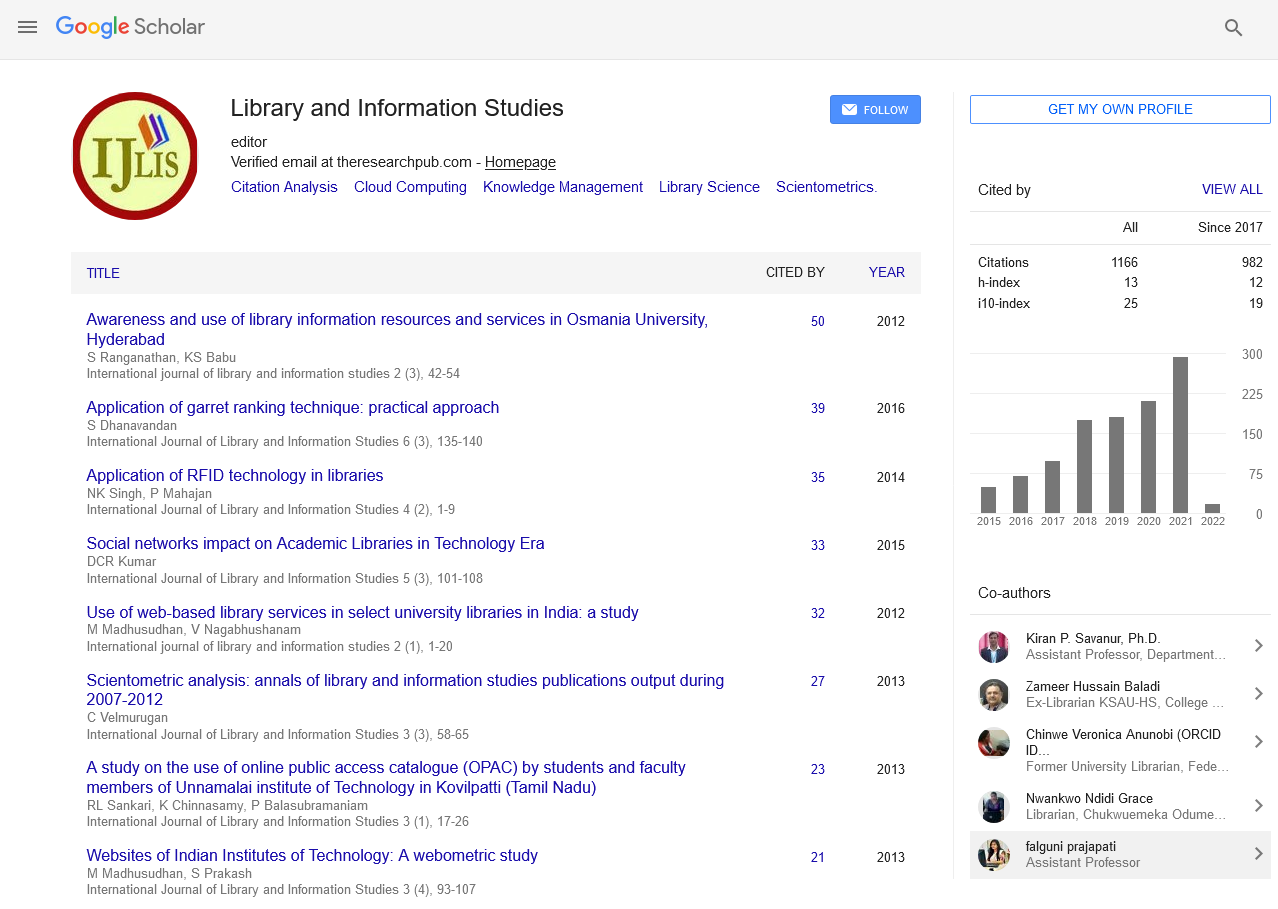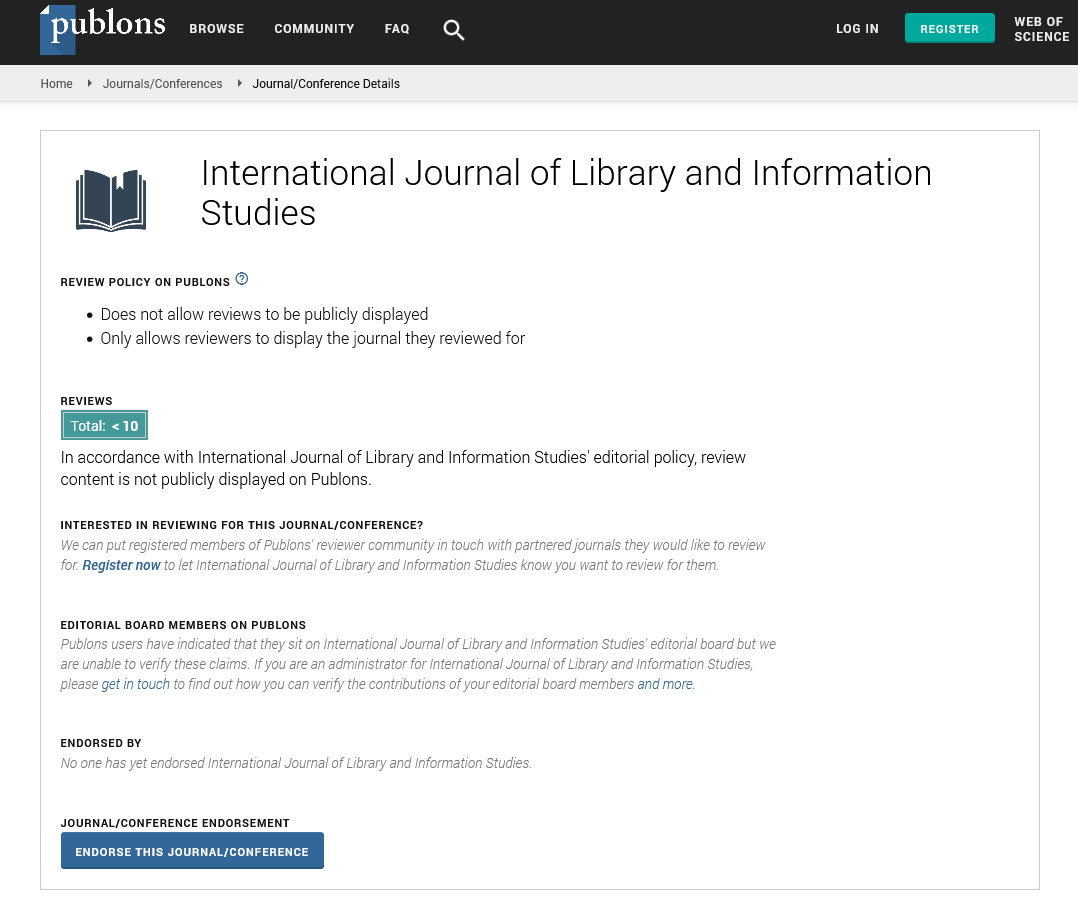Case Study - (2024) Volume 14, Issue 2
Developing and Evaluating the Dissemination Effectiveness of Educational Social Media Platform: Case Study from China
Tingting Ma1*, Yanwei Zhou2*, Anees Janee Ali3*, Abdullahi Ndagi4* and Chuanxi WangAbstract
The surge in social media usage has sparked researchers’ interest in its potential applications across various domains, particularly in educational settings. In this study, we established a three-layer evaluation system for the dissemination effect of Educational Social Media Platform (ESMP) based on the Analytic Hierarchy Process (AHP), which includes 3 second-level evaluation indicators and 16 third-level evaluation indicators. By constructing a comprehensive judgment matrix of evaluation factors and conducting consistency tests, we determined the weight contribution of indicators at each level. An empirical case has verified the feasibility and effectiveness of this method in evaluation. The results showed that the quality of educational information on social media platforms is more important than platform functionality and user performance. To ensure efficient dissemination of educational information on social media, it is potential to focus on practicality, professionalism, and richness of information. Additionally, attention should be given to network operation functions to maintain stable and efficient platform performance. Lastly, increasing user interactive engagement is essential.
Keywords
Social AHP, Dissemination Effectiveness, Educational Social Media Platform, Weight, Educational Quality.
Introduction
The proliferation of social media has become a global phenomenon, widely adopted across different cultures and societies (Albaner & Sabitzer, 2023). As the report of 2024, the number of users on social networking sites worldwide was estimated to reach 3.9 billion. The United States and China dominate the most prominent social platforms (Auer & Ruutmann, 2023). The top five social platforms globally, each with more than 1 billion monthly active users, are Facebook, YouTube, Instagram, WhatsApp, and TikTok. In China, local social networks such as WeChat, QQ, and video-sharing app Douyin have also gained main-stream attraction due to their services and content in their respective regions (Al-Qaysi & Al-Emran, 2020). With the increased use of mobile devices and the growing popularity of mobile social networks in previously under served markets, the number of registered users on social networks is expected to continue growing. Social media platforms offer multi-functionality, such as instant messaging, commenting, liking, and sharing, allowing users to conveniently communicate and interact with friends, family, and colleagues. Additionally, the rapid dissemination of news, events, and personal updates has been a significant factor in the widespread popularity of social media (Canning, 2010). In a global survey conducted in the fourth quarter of 2023, it was found that over 89.9% of users cited communication, interaction, leisure, and information acquisition as their primary reasons for using social media (Figure 1).
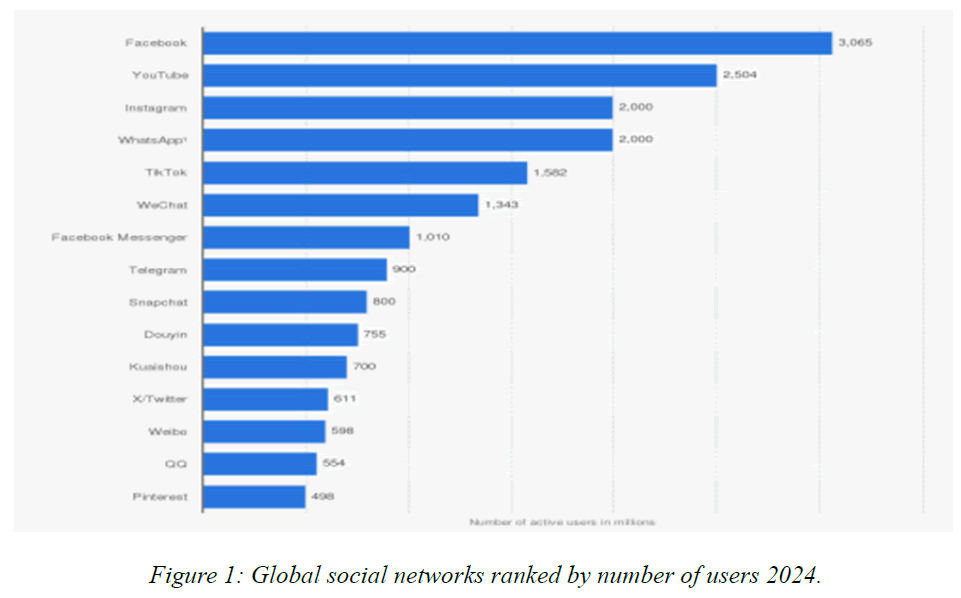
Figure 1: Global social networks ranked by number of users 2024.
Literature Review
Against the backdrop of the widespread adoption of the internet and mobile devices, social media has deeply integrated with education. The use of social media for educational purposes accounts for 8% to 10% of its total usage, and this proportion is rapidly increasing (Charband & Navimipour, 2016). Educational social media platforms are used not only for social interaction but also as important tools for communication and learning between students and teachers. Through social media platforms, educational resources can be disseminated more quickly and widely (Cho & Wenbo, 2024). Students and teachers can easily share and access educational information, study materials, and teaching experiences (Chugh & Macht, 2021).
Educational Social Media Platform (ESMP) refer to online platforms based on social media that disseminate educational information, typically focusing on knowledge dissemination and information updates in specific domains (Chugh & Ruhi, 2018). Leveraging social media platforms, ESMPs exhibit significant advantages in disseminating educational information. Disseminating educational information and resources through online platforms enables rapid distribution, greatly enhancing the efficiency of educational information dissemination, and compared to the constraints of time and space in traditional classroom education models, learners can access educational information anytime and anywhere with their mobile phones, diversifying educational settings. Social media platforms provide real-time interaction, offering educators and learners a space for interaction and communication (Chyne & Wann, 2023). Features such as online discussions and instant feedback on the communication platform enable educators to grasp the status of learners in a timely manner, adjust dissemination strategies promptly, provide personalized learning content and guidance, and enhance the specificity and effectiveness of learning (Darko & John, 2019). In terms of information content, uploading multimedia teaching materials (images, videos) enriches students’ learning experiences and diversifies learning effects (Gameil & Al-Abdullatif, 2023). Through the comprehensive analysis of the aforementioned empirical investigations, the educational contributions of ESMPs can be delineated into four distinct dimensions:
• Content: Rich and free learning content;
• Create: Users can independently generate personalized digital content;
• Connect: Connecting educators, learners, and others to disseminate information together;
• Collaborate: Collaboration on specific projects or common interests.
Evaluating the dissemination effectiveness of ESMPs is significant for educational institutions to better utilize social media platforms for branding and course promotion, thereby expanding their influence and attracting more students and educational resources (Han & Zhiwen, 2023). By understanding the actual effects of platforms in knowledge sharing and educational resource dissemination, improvements and optimizations can be provided as guidance for educational institutions (Jill, 2017). Moreover, data from social media platforms can be used for educational research, such as analyzing student learning behaviors and teacher teaching patterns, thus providing scientific basis for educational policymaking (Khan & Ahmed, 2021; Su & Lai, 2021). Through these efforts, teachers and students can access higher quality educational information and teaching resources, promoting educational equity and enhancing the contribution of modern education to society. However, there is currently a relative lack of research on evaluating the effectiveness of knowledge sharing on educational social media platforms, and there is a lack of effective evaluation standards.
The DSEEP user experience impact factor model to identify the real-world influence of digital science and education evaluation platforms (LaPointe & Gunawardena, 2004). This model identifies key factors such as functional services, information quality, interaction capability, interface and visual design, aiming to enhance users’ willingness to use the platform and effectively promote its sustainable development. A mixed method was used to conclude the effectiveness of digital learning platforms in an experiment on pre-service education, utilizing achievement tests, product evaluation cards, and learning engagement measurement tools (Lu & Teresa, 2021). The results helped participants improve their cognitive and practical skills, revealing that the platform had a significant impact on participants at cognitive, behavioral, and social levels. On the China Blog (LDB) learning platform, the emphasis has been placed on the impact of different types of participant interaction on the effectiveness of learning (Mc- Loughlin & Lee, 2010). Among these, interactions between learners and interactions between learners and content had a significant impact on the effectiveness of platform-based learning (LaPointe & Gunawardena, 2004). In addition, the current study examines the factors that influence e-learning and knowledge sharing behaviors on social media, yielding significant findings for evaluating the communication effectiveness of ESMPs (Qiu, et al., 2023). For instance, it explores variations and commonalities in individual and societal and interpersonal structures within the context of educational digitization (Saaty, 1990). Learners’ media literacy, and their needs for knowledge creation and positioning behaviors, platform culture construction strategies, as well as customized information and response capabilities (Saaty, 2008).
In summary, current research places significant emphasis on integrating education with various social media platforms, primarily focusing on exploring diverse influential factors in the process of communicating educational information through social media (Saaty, 2013). However, there remains an insufficient amount of comprehensive evaluation regarding the communicative efficacy of educational social media (Sobaih & Elnasr, 2020). To better evaluate the dissemination effectiveness of ESMPs, it is necessary to establish a scientific evaluation system, considering indicators such as functional service level, user coverage, interaction level, and quality of knowledge sharing on the platforms (Su & Li, 2021). Additionally, a combination of quantitative and qualitative methods can be employed, integrating data analysis and user surveys, to comprehensively assess the dissemination effectiveness of ESMPs and provide more accurate and comprehensive references for educational institutions (Vaidya & Kumar, 2006).
Methodology
Hierarchical structure evaluation system
The Hierarchical evaluation structure provides a method for evaluating the rationality of the grid structure based on weights and multi-level indicators (Vivakaran & Neelamalar, 2018). AHP (Analytic Hierarchy Process) is a widely used method in decision analysis of multi-level evaluation structures. It decomposes complex problems into simpler hierarchical structures and uses quantitative and qualitative methods to evaluate the relative importance of each factor, thereby providing a scientific basis for decision-making (Wang & Jinwen, 2023). AHP can be used to analyze the communication effect of educational social media by decomposing complex decision-making problems into simpler hierarchical structures and evaluating the relative importance of each factor, thus providing scientific analysis and decision support for the communication effect of educational social media (Saaty, 1990). By establishing a hierarchical model, constructing a judgment matrix, calculating eigenvectors and eigenvalues to obtain comprehensive weights, we can obtain effective evaluation results based on these weights (Wang & Jinwen, 2023).
The evaluation of the dissemination effect of ESMPs focuses on three key factors: users, content, and platform. At the user level, it is essential to measure the extent of user interaction and participation on social media platforms, as well as the quality of interactions among users. Additionally, it is potential to assess the willingness and behavior of users to continue using and engaging with the platform (Zhang & Chenghong, 2019). This entails measuring indicators such as user likes, comments, shares, reposts, interactive discussions, user activity levels, return visit rates, and long-term user numbers (Gameil & Al-Abdullatif, 2023; Qiu & Yu, 2023; Zhang & Min, 2019). From a content perspective, two aspects are evaluated. Firstly, the reach of educational content on social media platforms is measured by considering factors such as views count and playbacks count along with indicators related to user coverage and exposure. Secondly, the quality of published con-tent is assessed in terms of its educational value and feedback from users. Indicators for this evaluation include ratings provided by users regarding content quality, surveys gauging satisfaction levels, and assessments pertaining to professionalism, content accuracy, and relevance (Albaner & Sabitzer, 2023; Chyne & Wann, 2023; Wang & Jinwen, 2023). Lastly, the technical functionality offered by social media platforms in supporting educational communication efforts is also measured. Platform stability, user interface friendliness, functional richness, response speed for technical support, and interface/visual design are some parameters considered in this assessment (Lu & Teresa, 2021; Wang & Jinwen, 2023).
The criterion layer of the hierarchical evaluation system for ESMPs dissemination effect includes the main factors that influence the effectiveness of dissemination. The criterion layer of this study consists of three aspects in total, namely user engagement, content quality, and technical functionality. It covers 16 evaluation indicators to assess the overall effectiveness. The hierarchical evaluation model of dissemination effectiveness of educational social media platforms is presented in Table 1.
| First-level A | Second-level B | Third-level C |
|---|---|---|
| Evaluating of the Dissemination Effectiveness of Educational Social Media Platforms (A) | User Engagement (B1) |
Users actively engage in learning (C11) |
| Users frequently interact and discuss (C12) | ||
| Users frequently likes, recommendations, shares, forwarding and other behaviors (C13) | ||
| Users have a strong desire to continue using and participating in the platform (C14) | ||
| Users have a high return rate and a large number of long-term users (C15) | ||
| Content Quality (B2) |
Educational content received high recommendation, viewing and playback (C21) | |
| Educational content can be updated daily (C22) | ||
| Educational content covers a wide range and disseminates rich knowledge (C23) | ||
| Educational content is of good quality and high educational value (C24) | ||
| Educational content is professional and accurate (C25) | ||
| Educational content is practical and relevant to life (C26) | ||
| Platform Functionality (B3) |
The platform can run stably when logged in and used (C31) | |
| The platform’s interface is rich in functions and the user experience is good (C32) | ||
| The platform’s service functions are powerful and make users feel friendly (C33) | ||
| The platform’s technical support responds quickly (C34) | ||
| The platform’s visual design is colorful and can attract attention (C35) |
Table 1: Hierarchical Structure Valuation System for Dissemination Effectiveness of Educational Social Media Platforms
Determine the weight of each factor
The Analytic Hierarchy Process (AHP) is a subjective weighting method based on expert experience for evaluating indices. To construct the judgment matrix, this study adopts the 1-9 scale method proposed by Saaty, which has been proven through practice to minimize adverse factors resulting from subjective judgments (Saaty, 2008). For instance, incomplete consideration or excessive gradations may lead to data inconsistency with actual importance levels and implicit contradictions in the data. Experimental results demonstrate that this scale is highly suitable based on the accuracy of judgments made by individuals across various scales. Specifically, pairwise comparisons are used to determine the relative importance of each criterion in the factor layer. A value of 1 indicates equal importance between factors, while values of 3, 5, 7, and 9 indicate slight, significant, more important than and significantly more important than relationships respectively between factors. Values of 2, 4, 6, and 8 represent intermediate values within these adjacent judgments (Saaty, 2013).
The weight calculation involves simultaneous computation of the feature root and maximum feature root, followed by determination of the Consistency Index (CI) value for subsequent consistency testing. The eigenvector and eigenvalue of each factor are computed based on the judgment matrix to derive the weight for each factor. Initially, the product of elements in each row of the judgment matrix is computed (Sobaih & Elnasr, 2020).

The ratio between the, i element aij of and the j element in the above equation is calculated. The geometric mean of each row is computed, and then the “n” root of Mi is determined.

The geometric mean is normalized in order to derive the feature vector.

The eigenroot of the judgment matrix is derived by computing its eigenvector.

The next step is to compute the maximum eigenvalue of the judgment matrix.

The value of conformance index CI needs to be calculated.

The consistency of the judgment matrix is verified to ensure that the Consistency Ratio (CR) is below 0.1, indicating an acceptable level of consistency. If CR exceeds 0.1, adjustments are required for the judgment matrix. The corresponding average random consistency index RI is determined by constructing 500 sample matrices using a random method and generating positive reciprocal matrices by randomly selecting numbers from 1 to 9 and their reciprocals. The average value of the largest eigenroot λmax is then calculated. Saaty (2008), provides values for RI based on “n” ranging from 1 to 9: [1, 0], [2, 0], [3, 0.58], [4, 0.90], [5, 1.12], [6, 1.24], [7, 1.32], [8, 1.41], [9, 1.45], [4, 0.90], [4, 0.90]. The next step is to compute the Consistency Ratio (CR).

The comprehensive weight of each factor is calculated based on the calculation steps from (1) to (7), leading to the determination of the final weight. The evaluation of dissemination effectiveness in educational social media platforms is then conducted according to the obtained comprehensive weight.
Case Study
The “Youth Learning” social media platform is an online learning platform initiated by the Central Committee of the Communist Youth League of China to cater to the needs of young people and promote their self-learning and personal growth. The platform aims to create a new space for youth to learn, exchange ideas, and enhance their knowledge base, critical thinking skills, and practical abilities through interactive online learning and resource sharing. It covers a wide range of subjects including political theory, history and culture, science and technology, as well as social practice. The platform offers diverse learning resources such as text-based materials, images, videos, audios etc., catering to different groups of young learners. Moreover, it provides a user-friendly experience with efficient operational mechanisms that enable college students to easily enjoy the benefits and joy of learning.
The research team at Hunan Institute of Technology evaluates the dissemination effectiveness of the “Youth Learning” social media platform using the Analytic Hierarchy Process (AHP) methodology to conduct comprehensive analysis and scoring based on selected evaluation factors. The weightage assigned to each factor is determined through expert opinions. A survey was conducted among 30 freshmen from which data results were obtained. These original questionnaires were carefully screened before aggregating the findings. The constructed judgment matrix for all levels can be seen in Tables 2-5.
| A | B1 | B2 | B3 |
|---|---|---|---|
| B1 | 1 | 1/9 | 1/5 |
| B2 | 9 | 1 | 1 |
| B3 | 5 | 1 | 1 |
Table 2: Judgment Matrix A-Bi (i=1~3)
| B1 | C11 | C12 | C13 | C14 | C15 |
|---|---|---|---|---|---|
| C11 | 1 | 1/3 | 1/7 | 1/5 | 1/4 |
| C12 | 3 | 1 | 1/5 | 1/3 | 1/2 |
| C13 | 7 | 5 | 1 | 3 | 5 |
| C14 | 5 | 3 | 1/3 | 1 | 3 |
| C15 | 4 | 2 | 1/5 | 1/3 | 1 |
Table 3: Judgment Matrix B1-C1i (i=1~5)
| B2 | C21 | C22 | C23 | C24 | C25 | C26 |
|---|---|---|---|---|---|---|
| C21 | 1 | 1/3 | 1/5 | 1/4 | 1/6 | 1/7 |
| C22 | 3 | 1 | 1/4 | 1/3 | 1/5 | 1/6 |
| C23 | 5 | 4 | 1 | 3 | 1/3 | 1/5 |
| C24 | 4 | 3 | 1/3 | 1 | 1/4 | 1/7 |
| C25 | 6 | 5 | 3 | 5 | 1 | 1/3 |
| C26 | 7 | 6 | 5 | 7 | 3 | 1 |
Table 4: Judgment Matrix B2-C2i (i=1~6)
| B3 | C31 | C32 | C33 | C34 | C35 |
|---|---|---|---|---|---|
| C31 | 1 | 1 | 1 | 1 | 3 |
| C32 | 1 | 1 | 1 | 1/2 | 2 |
| C33 | 1 | 1 | 1 | 1 | 3 |
| C34 | 1 | 2 | 1 | 1 | 5 |
| C35 | 1/3 | 1/2 | 1/3 | 1/5 | 1 |
Table 5: Judgment Matrix B3-C3i (i=1~5)
The consistency test results of the evaluation indicators at all levels of the ESMPs communication effect evaluation judgment matrix is presented in Table 6. Based on the calculation result of the consistency ratio CR, we conclude that the judgment matrix for this analysis demonstrates acceptable consistency. Therefore, we consider this judgment matrix to be reasonable and suitable for subsequent decision analysis. Consequently, we determine that the judgment matrix is logically sound and can be utilized for sustainable evaluation of social media communication quality and fairness in student education (Table 6).
| Judgment Matrix | Λmax | CI | RI | CR | Consistency Inspection |
|---|---|---|---|---|---|
| Results | |||||
| A-Bi (i=1~3) | 3.039 | 0.019 | 0.52 | 0.037 | PASS |
| B1-C1i (i=1~5) | 5.214 | 0.054 | 1.12 | 0.048 | PASS |
| B2-C2i (i=1~6) | 6.567 | 0.113 | 1.26 | 0.09 | PASS |
| B3-C3i (i=1~5) | 5.075 | 0.019 | 1.12 | 0.017 | PASS |
Table 6: Consistency Inspection Results of Judgment Matrix
By calculating the judgment matrix, we get the weight value of each factor. These weight values reflect the importance of each factor in the overall evaluation, and these weight values will provide a basis for subsequent decision-making. In this analysis, the weight values of each factor are shown in Figures 2-5. The weights of the secondary index are 0.1593 for user engagement B1, 0.5899 for content quality B2, and 0.2519 for platform function B3. Among the weight results of the three indexes under the user input B1 index, the top three are the user’s active interaction behavior C13 (0.4907), the user’s continuous use C14 (0.2411), and the user’s high return rate C15 (0.1308). Slightly weaker are user participation C12 (0.0929) and user discussion C11 (0.0445). The subordinate indicators of education content quality B2 and their weight ranking from high to low are as follows: Content practicality C26 (0.4381), content professionalism C25 (0.2449), content richness C23 (0.1419), content accuracy C24 (0.0860), content update rate C22 (0.0563), and content high recommendation C21 (0.0329). The weight values of the lower indexes of platform functional experience B3 are relatively close. The indexes that receive more than 20% weight are platform responsiveness C34 (0.2905), platform stability C31 (0.2256), and platform service function C33 (0.2256). The components with less weight are platform service C32 (0.1843) and platform design C35 (0.0741). The final weight calculation results of indicators at all levels are summarized (Figures 2-5 and Table 7).
| First-level A | Second-level B and Weights |
Third-level C and Weights |
||
|---|---|---|---|---|
| Evaluating of the Dissemination Effectiveness of Educational Social Media Platforms (A) | B1 | 0.0701 | C11 | 0.0445 |
| C12 | 0.0929 | |||
| C13 | 0.4907 | |||
| C14 | 0.2411 | |||
| C15 | 0.1308 | |||
| B2 | 0.5094 | C21 | 0.0329 | |
| C22 | 0.0563 | |||
| C23 | 0.1419 | |||
| C24 | 0.0860 | |||
| C25 | 0.2449 | |||
| C26 | 0.4381 | |||
| B3 | 0.4205 | C31 | 0.2256 | |
| C32 | 0.1843 | |||
| C33 | 0.2256 | |||
| C34 | 0.2905 | |||
| C35 | 0.0741 | |||
Table 7: The Weights Calculation Results
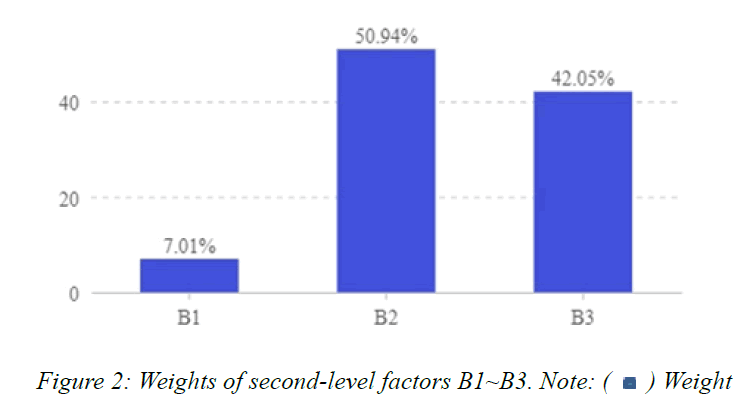
Figure 2: Weights of second-level factors B1~B3. Note:  Weight
Weight
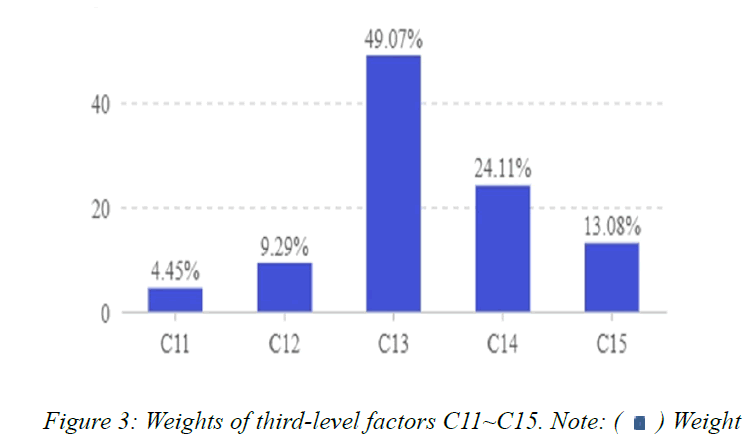
Figure 3: Weights of third-level factors C11~C15. Note:  Weight
Weight
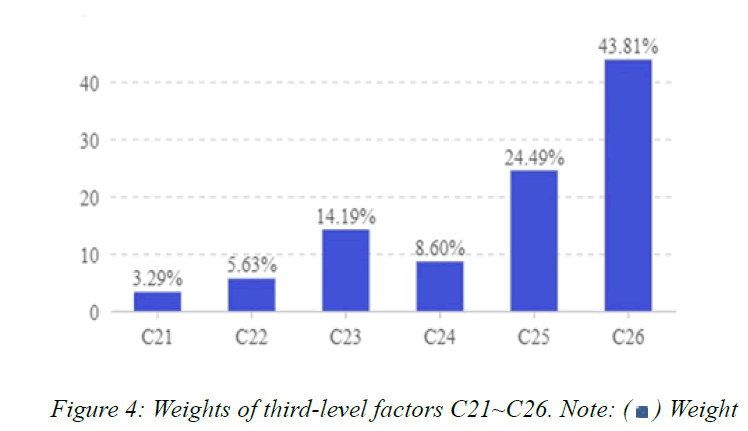
Figure 4: Weights of third-level factors C21~C26. Note:  Weight
Weight
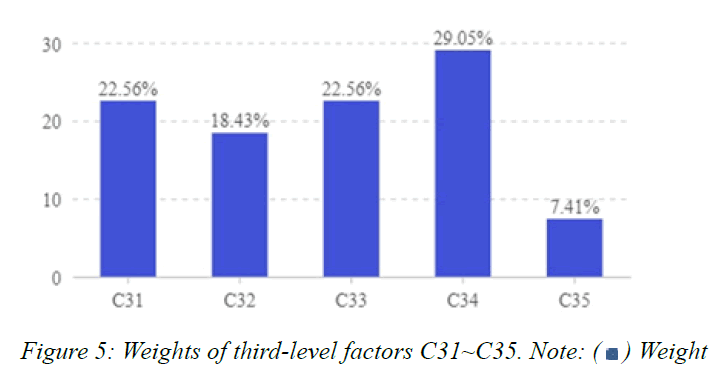
Figure 5: Weights of third-level factors C31~C35. Note:  Weight
Weight
Results and Discussion
The weight calculation results of multi-layer structural factors indicate that among the secondary indicators, the content quality B2 of online education on social media platforms holds the highest weight. This implies that the dissemination effect can be better reflected by the quality of content disseminated through network platforms rather than by students’ online performance and platform operation ability. Therefore, social media platforms should prioritize the selection of communication content. Only high-quality educational information that meets students’ needs can significantly enhance platform communication and achieve better educational outcomes. To improve the quality of platform communication content, attention should primarily be given to aspects such as content richness, professionalism, intimacy, timeliness, and attention. Further analysis of measurement results reveals that resonance between platform content and students’ daily needs C26 is the most influential factor, followed by conveying professional and accurate content C25. This indicates that attracting individuals through engaging educational social media and demonstrating sufficient professionalism are key approaches to increasing college students’ participation in online learning and enhancing platform communication effectiveness.
In the survey of secondary factors regarding weight results, the weight assigned to user performance is merely 0.0701. It becomes evident that in actual evaluations, users’ performance inadequately reflects the educational communication effect of social platforms. Despite peer interaction significantly influencing the learning outcomes within network communities, users predominantly prioritize information quality and practicality concerning the educational information dissemination effect on social media platforms (LaPointe & Gunawardena, 2004). Despite the expanded application of social media in educational settings, which has unlocked novel avenues for interactive learning methodologies and facilitated the dissemination of educational knowledge, the intrinsic value of the educational content remains a pivotal factor in attracting student users and achieving effective communication outcomes (Lu & Teresa, 2021 & Zhang & Chenghong, 2019).
In addition, the weight of platform functions has reached a remarkable 0.4205, signifying that users place paramount importance on the functionality and steadfastness of social platforms. To achieve optimal educational communication effects, numerous universities in China have established official accounts on popular social platforms like WeChat public accounts to periodically disseminate academic lectures, news updates, knowledge competitions, and other informative content. The intuitive user interface coupled with its seamless features is more than sufficient to entice students into actively engaging in their learning endeavors. Social media has fostered an interactive and innovative environment that enriches learning experiences beyond the confines of traditional classrooms while seamlessly connecting students, teachers, experts, and other individuals within a broader space and on a grander scale; thus, blurring the boundaries between formal education and informal learning. Based on the calculation results from three levels of platform functionality B3 analysis, it can be observed that the weights assigned to platform support response speed C34 as well as platform stability C31 are approximately equal to that of platform function richness C33.
Limitation and future work
The aim of this study is to explore the evaluation system for assessing the impact of social media communication on online education. While effectively employing the Analytic Hierarchy Process (AHP) method to analyze and construct a multi-level set of evaluation indicators, which allows for a clear breakdown, comparison, and comprehensive assessment of communication effectiveness, it is important to note that excessive levels and factors when constructing the evaluation index system can complicate the comparison and judgment process, potentially weakening accurate evaluations. Therefore, we will actively explore more comprehensive methods for evaluation in the future.
Additionally, this research examines the utilization and evaluation of “Youth Learning,” a social media platform, among freshmen at Hunan Institute of Technology. The findings of this study have significant implications for enhancing students’ educational behaviors through the use of social media in this particular academic setting. In the future, we aim to expand our international study cases and compare the communication effects of different educational social media platforms while conducting more comprehensive investigations and studies.
Conclusion
The present study focuses on freshmen from Hunan Institute of Technology as the research subjects, aiming to assess the impact of social media education platforms on Chinese youth college learning. By combining qualitative and quantitative approaches, this study effectively addresses the complex and ambiguous issues related to communication effects, optimizing the utilization, design, and operation of educational social media platforms while enhancing educational quality and user experience. In the process, a sophisticated grading evaluation system was established, and the weights of influencing factors at each level were determined through meticulous calculations. The analytic hierarchy process was employed to construct judgment matrices for each level, followed by a consistency test to determine the weights of evaluation factors at each level. The key findings of this study are as follows:
1. The weight calculation results of the second-level index impact factor indicate that user performance B1 has a weight of 0.0701, content quality B2 propagated by the platform has a weight of 0.5094, and platform technical function support B3 has a weight of 0.4205. It can be observed that the educational information disseminated by social media platforms is more indicative of the platform’s effectiveness through its quality rather than its technical functional services and user performance. The core competence of educational social media platforms lies in enhancing the quality of educational content.
2. Among the evaluation factors of the second-level indicators, sub-index C1i of user performance B1 is ranked in the following order of weight: C13>C14>C15>C12>C11. It can be observed that students’ active utilization and positive feedback on educational platforms play a potential role in enhancing the communication effectiveness of educational social media platforms. To achieve a higher information dissemination rate on these platforms, it is essential to not only focus on students’ engagement in online learning but also encourage their active participation in relevant interactions such as liking, sharing, forwarding, and recommending. By doing so, users’ recognition and acceptance of information can be enhanced. Participatory learning has the potential to stimulate students’ initiative and enable them to experience the joy of learning. This precisely highlights the advantage of spreading educational information through social media.
3. In the secondary index, content quality B2’s sub-index C2i is ranked as C26>C25>C23>C24>C21 in terms of weight. It can be observed that when it comes to receiving educational information, college students show a greater interest in content that is closely related to their daily lives and possesses a high level of professionalism and richness. Particularly, if the information is practical and applicable in real life, college students will become more engaged with it and willingly continue using the educational social platform for learning.
4. In terms of second-level indicators, the ranking order for platform functionality B3’s sub-index C3i is as follows: Ci34>C31>C33>C32>C35. It is evident that technical responsiveness and stability are considered crucial factors influencing communication effectiveness. Therefore, it is imperative for social network platforms to prioritize technical support and platform stability while providing a seamless user experience and educational context. This will foster user loyalty towards the platform, thereby enhancing its overall effectiveness.
Funding
This research was funded by the Philosophy and Social Science Foundation of Hunan Province with grant number “21YBA223”, the Excellent Project of Ideological and Political Work in Universities of Hunan Province with grant number “23JP034”, the Philosophy and Social Science Foundation of Hengyang City, General Project “Research on the Current Situation and Countermeasures of Introducing ‘High-tech’ Talents in Hengyang in the Post-epidemic Era”, Project No. 2022C004, the National College Students Innovation and Entrepreneurship Training Program (No.: S202411528031).
Author Contributions
T.M., Y.Z., A.J.A. and A.N. focused on conceptualization, methodology, resources, and writing— original draft preparation, T.M. focused on conceptualization, methodology, supervision, and writing—review and editing. All authors have read and agreed to the published version of the manuscript.
Data Availability Statement
The datasets generated during the current study are available from the corresponding author upon reasonable request.
Conflicts of Interest
The authors declare no conflicts of interest.
References
- Albaner Birgit, and Barbara Sabitzer. "Educators and digital fit? A diversity study based on the person-environment fit model in times of increasing digitalization in schools." International Conference on Interactive Collaborative Learning. Cham: Springer International Publishing, 2022.
- Auer E. Michael, Wolfgang Pachatz, and Tiia Ruutmann. Learning in the Age of Digital and Green Transition. Springer 2023.
- Al-Qaysi Noor, Norhisham Mohamad-Nordin, and Mostafa Al-Emran. "Employing the technology acceptance model in social media: A systematic review." Educ Inf Technol 25 (2020): 4961-5002.
- Canning Natalie. "Playing with heutagogy: Exploring strategies to empower mature learners in higher education." J Furth High Educ 34.1 (2010): 59-71.
- Charband Yeganeh, and Nima Jafari Navimipour. "Online knowledge sharing mechanisms: A systematic review of the state of the art literature and recommendations for future research." Inf Syst Front 18 (2016): 1131-1151.
- Cho Hyunyi, Cannon Julie, Lopez Rachel, Li Wenbo. "Social media literacy: A conceptual framework." New Media Soc 26.2 (2024): 941-960.
[Crossref] [Google Scholar] [PubMed]
- Chugh Ritesh, Robert Grose, and Stephanie A. Macht. "Social media usage by higher education academics: A scoping review of the literature." Educ Inf Technol 26.1 (2021): 983-999.
- Chugh Ritesh, and Umar Ruhi. "Social media in higher education: A literature review of Facebook." Educ Inf Technol 23 (2018): 605-616.
- Chyne Rudolf Carey, Jiarlimon Khongtim, and Tiplut Wann. "Evaluation of social media information among college students: An information literacy approach using CCOW." J Acad Libr 49.5 (2023): 102771.
- Darko Amos, Chan Albert Ping Chuen, Ameyaw Ernest Effah, Owusu Emmanuel Kingsford, Pärn Erika, and Edwards David John. "Review of application of analytic hierarchy process (AHP) in construction." Int J Constr Manag 19.5 (2019): 436-452.
- Gameil Azza Ali, and Ahlam Mohammed Al-Abdullatif. "Using digital learning platforms to enhance the instructional design competencies and learning engagement of preservice teachers." Educ Sci 13.4 (2023): 334.
- Han Shuyu, Li Hui, Li Ke, and Wang Zhiwen. "The development and evaluation of a social media-based HIV knowledge dissemination platform in China." Int J Nurs Sci 10.3 (2023): 288-293.
[Crossref] [Google Scholar] [PubMed]
- Jill Walsh. Adolescents and their social media narratives: A digital coming of age. Routledge, 2017.
- Khan Muhammad Naeem, Ashraf Muhammad Azeem, Donald Seinen, Khan Kashif Ullah, and Laar Rizwan Ahmed. "Social media for knowledge acquisition and dissemination: The impact of the COVID-19 pandemic on collaborative learning driven social media adoption." Front psychol 12 (2021): 648253.
[Crossref] [Google Scholar] [PubMed]
- LaPointe, Deborah K., and Charlotte N. Gunawardena. "Developing, testing and refining of a model to understand the relationship between peer interaction and learning outcomes in computer‐mediated conferencing." Distance Educ 25.1 (2004): 83-106.
- Lu Daniel, Ruan Brandon, Lee Mark, Yilmaz Yusuf, and Chan M. Teresa. "Good practices in harnessing social media for scholarly discourse, knowledge translation, and education." Perspect Med Educ 10 (2021): 23-32.
[Crossref] [Google Scholar] [PubMed]
- McLoughlin, Catherine, and Mark JW Lee. "Personalised and self regulated learning in the Web 2.0 era: International exemplars of innovative pedagogy using social software." Australas J Educ Technol 26.1 (2010).
- Qiu Junping, Xu Zhongyang, Luo Haibei, Zhou Jianing, and Zhang Yu. "User experience of digital science and education evaluation platform: identification and analysis of key influencing factors." Library Hi Tech ahead-of-print (2023).
- Saaty L Thomas. "How to make a decision: The analytic hierarchy process." Eur J Oper Res 48.1 (1990): 9-26.
- Saaty L Thomas. "Decision making with the analytic hierarchy process." Int J Serv Sci 1.1 (2008): 83-98.
- Saaty L Thomas. "The modern science of multicriteria decision making and its practical applications: The AHP/ANP approach." Oper Res 61.5 (2013): 1101-1118.
- Sobaih Abu Elnasr E., Ahmed M. Hasanein, and Ahmed E. Abu Elnasr. "Responses to COVID-19 in higher education: Social media usage for sustaining formal academic communication in developing countries." Sustainability 12.16 (2020): 6520.
- Su Yu-Sheng, and Chin-Feng Lai. "Applying educational data mining to explore viewing behaviors and performance with flipped classrooms on the social media platform Facebook." Front psychol 12 (2021): 653018.
[Crossref] [Google Scholar] [PubMed]
- Vaidya Omkarprasad S., and Sushil Kumar. "Analytic hierarchy process: An overview of applications." Eur J Oper Res 169.1 (2006): 1-29.
- Vivakaran Mangala Vadivu, and M. Neelamalar. "Utilization of social media platforms for educational purposes among the faculty of higher education with special reference to Tamil Nadu." High Educ Future 5.1 (2018): 4-19.
- Wang Jianmei, and Xie Jinwen. "Exploring the factors influencing users' learning and sharing behavior on social media platforms." Libr Hi Tech 41.5 (2023): 1436-1455.
- Wang Jianmei, Zareapoor Masoumeh, Chen Yeh-Cheng, Shamsolmoali Pourya, and Xie Jinwen. "What influences news learning and sharing on mobile platforms? An analysis of multi-level informational factors." Libr Hi Tech 41.5 (2023): 1395-1419.
- Zhang Yicheng, Lu Tian, Wei Phang Chee, and Zhang Chenghong. "Scientific knowledge communication in online Q&A communities: linguistic devices as a tool to increase the popularity and perceived professionalism of knowledge contribution. J Assoc Inf Syst 20.8 (2019): 3.
- Zhang Nan, Xu Tianwei, Zhou Juxiang and Xie Min. "Design and evaluation of micro-class based on WeChat public platform." e-Learning, e-Education, and Online Training: 5th EAI International Conference, eLEOT 2019, Kunming, China, August 18-19, 2019, Proceedings 5. Springer International Publishing, 2019.
Author Info
Tingting Ma1*, Yanwei Zhou2*, Anees Janee Ali3*, Abdullahi Ndagi4* and Chuanxi Wang2School of Marxism, Hunan Institute of Technology, Hengyang-421001, China
3Department of Information Science, School of Management, Science University of Malaysia, Penang-11800, Malaysia
4Department of Business Administration, Ibrahim Badamasi Babangida University, Lapai - 911101, Nigeria
5China
Received: 13-Jul-2024, Manuscript No. IJLIS-24-141618; Editor assigned: 16-Jul-2024, Pre QC No. IJLIS-24-141618(PQ); Reviewed: 07-Aug-2024, QC No. IJLIS-24-141618; Revised: 14-Aug-2024, Manuscript No. IJLIS-24-141618(R); Published: 21-Aug-2024, DOI: 10.35248/2231-4911.24.14.860
Copyright: This is an open access article distributed under the terms of the Creative Commons Attribution License, which permits unrestricted use, distribution, and reproduction in any medium, provided the original work is properly cited.
Call for Papers
Authors can contribute papers on
What is Your ORCID
Register for the persistent digital identifier that distinguishes you from every other researcher.
Social Bookmarking
Know Your Citation Style
American Psychological Association (APA)
Modern Language Association (MLA)
American Anthropological Association (AAA)
Society for American Archaeology
American Antiquity Citation Style
American Medical Association (AMA)
American Political Science Association(APSA)



